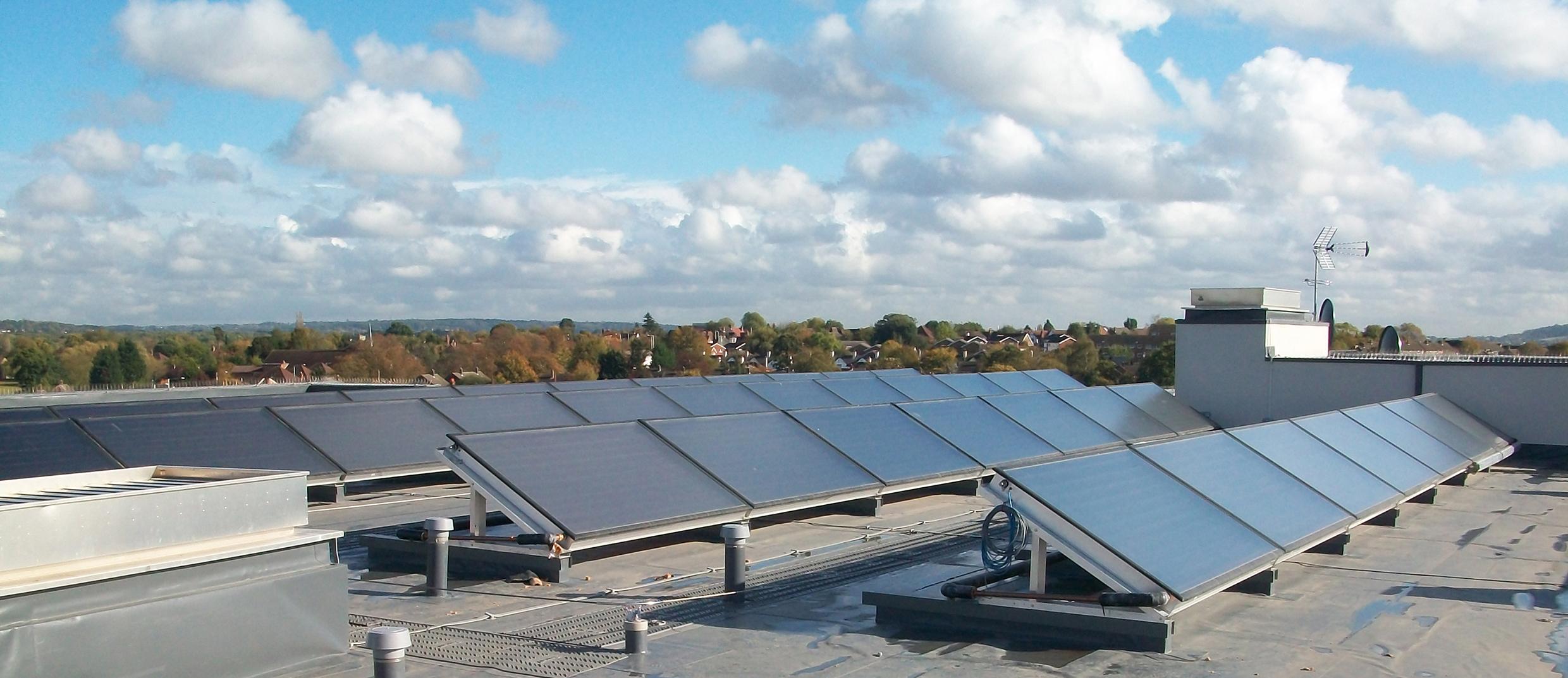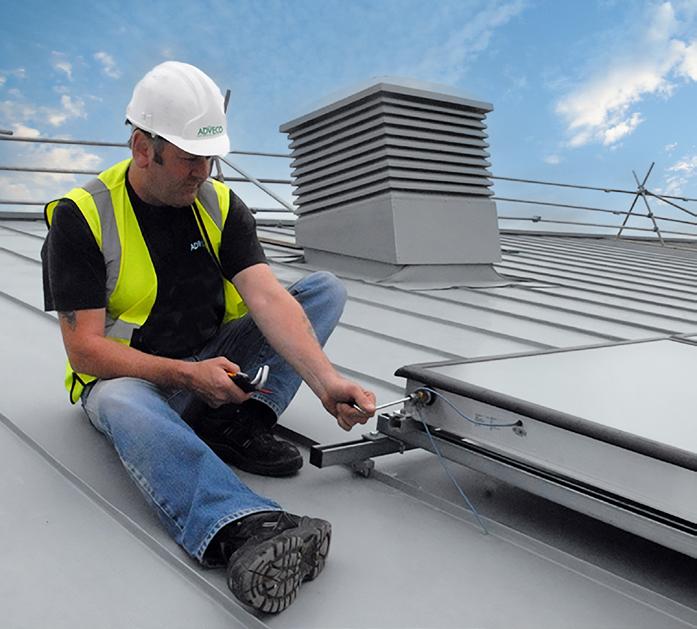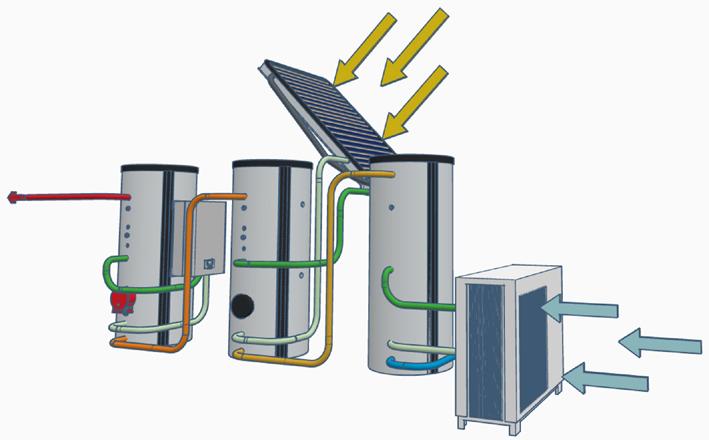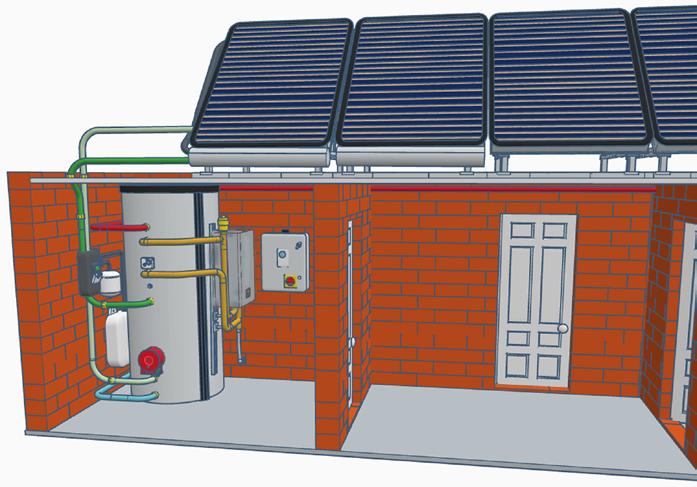
5 minute read
Salvaging Solar Investments
By 2010 the government’s Low Carbon Building Programme (CBP), quickly followed by the Renewable Heat Incentive (RHI) would be instrumental, through financial incentives, in the uptake of solar systems as a meaningful application of renewables in business buildings. With support under RHI focused on existing buildings, and with a clear return on investment (ROI) many organisations committed to solar thermal to provide for a proportion of their annual hot water demands. Purchasing flat plate or evacuated tube systems, proved cost effective and the technology enjoyed a heyday.
Nearly fifteen years on, many of those systems now sit unusable on the roofs of commercial buildings. The causes are varied, poor initial installation issues and lack of servicing and maintenance ultimately leading to system overheat and failure, even in sealed systems. Manufacturer support for evacuated tube systems also waned as key suppliers moved away from the technology. Other sites were prone to vandalism, and for many the costs of protecting an installation or repairing it where to high and they were simply switched off.

Solar thermal technology, despite the end of government funding, did not die. Systems which were properly installed and serviced have proven to enjoy a long lifespan with low maintenance demands. This is especially true of flat plate collector systems which, with proven drain back technology employ gravity flow to preserve operational qualities of the solar fluid required to transfer solar energy as heat to the hot water application. A well designed and balanced hot water system deploying solar thermal as a preheat can offset a minimum of 30% of the annual energy demands for hot water in the UK. For some regions this percentage is much higher and, in the summer months, can potentially meet a system’s entire energy demand, especially in the case of smaller commercial businesses and offices.
The drive for net zero, plus bill shock from the transition from gas to electric and is now helping to reinvigorate interest in the technology which presents a strong ROI of less than 10 years, even on large systems.
The new rooftop battleground
Today chillers, heat pump and solar systems are all vying for valuable rooftop space as commercial buildings look to reduce carbon emissions and embrace high-efficiency heating and colling. This is especially the case for many businesses, and high-rise properties with considerable energy demands and limited roof space. Compared to solar photovoltaics (PV), solar thermal is eight times more effective per m² in addressing energy needs for water heating, meaning a smaller panel area. A typical office may require, as a rule of thumb, one solar thermal collector per 100 litres of thermal storage capacity. Most commercial applications will require six to 20 solar collector panels. So the recommendation is to apply solar PV for electric space heating, but reserve roof space for solar thermal for more efficient, low-carbon water heating.

Embracing solar thermal
With new high-efficiency, robust flat plate collectors and protective drain back, dedicated cylinders and smart controls all innovated by Adveco to integrate solar thermal with electric top-up there is a real opportunity to resurrect systems which have fallen into disrepair. Most refurbishments where overheating has been the cause of shut down will require new collector panels and pipework which fortunately is a relatively straightforward replace and reinstall process. This allows for upgrades to existing gas water heating, saving energy and reducing emissions from the system.

Alternatively, Adveco can support the transition to full electric water heating with solar thermal through bespoke system design and product supply. For smaller systems and organisations with lower capacity demands such as offices, Adveco FUSION offers a pre-defined low-carbon system that is compact, easy to install, resilient and cost-effective. For organisations which are considering but not ready to commit to a heat pump based system, FUSION T is available now with an option that delivers a twin-coil stainless steel tank and mounted ARDENT electric boiler and controls without the heat pump preheat. This iteration allows for solar thermal to be introduced into the lower coil as system preheat with a small amendment to the controls to optimise top up heating from the boiler as the pre-heat fluctuates across the year. With FUSION now supporting capacities up to 750 litres with 24kW heat output, it is suitable for solar systems designed for small to medium-sized buildings.
While most solar thermal systems would be designed to split the preheater and after heater, this single cylinder FUSION scenario avoids the typical requirements of a 50/50 capacity split between preheat and top up. Adveco’s smart controls allows the system to ‘cheat’ in favour of the solar thermal delivering a 600 litre solar capacity in a 750 litre tank for an extremely compact option for all-electric low-carbon emission solar water heating system with a minimal rooftop or façade footprint.











